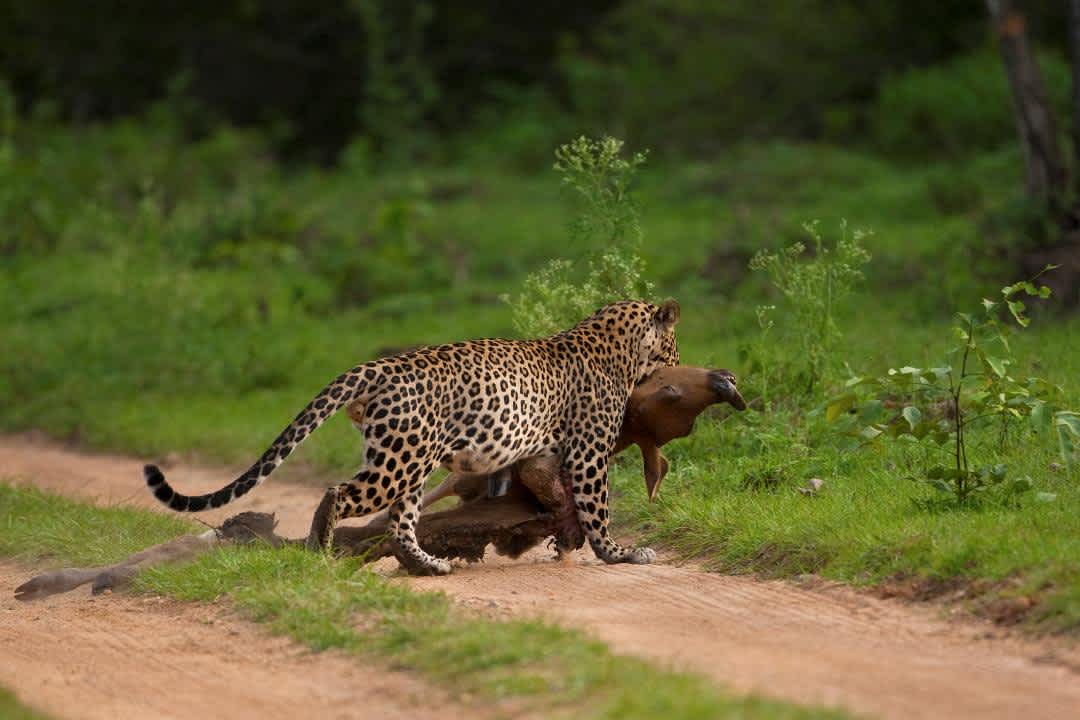A Leopard’s Tale: Leopard in Dramatic Photo with Gaur Traced to WCS Camera Trap Image
OutdoorHub 07.19.12

A dramatic photo of a male leopard dragging a massive gaur (or Indian bison) calf in Karnataka’s Bandipur Tiger Reserve turned out to be the same animal photographed by a WCS camera trap nearly eight years ago.
The photo, taken by Indian photographer Vinay S. Kumar, was initially submitted to Conservation India, a not-for-profit portal to enable conservation action. Intrigued by the picture, CI’s editors sent it to researchers at Wildlife Conservation Society’s India Program who have been running a tiger-monitoring program for over two decades – the longest in the world. Their huge database of camera trap pictures also includes hundreds of pictures of leopards.
The male was quickly identified, thanks to special computer software that can compare rosette patterns, as Bandipur Leopard #123 or BPL-123, which was first camera-trapped on December 2, 2004, according to Dr. N. Samba Kumar, Joint Director – Conservation Science, WCS – India.
The intensive, long-term camera trapping project, implemented by the Centre for Wildlife Studies, in collaboration with the Karnataka Forest Department, and with support from Wildlife Conservation Society, has yielded extremely valuable data on large carnivore densities, as well as recruitment and survival rates, all of which are crucial to gauge how big cat populations are faring. Research at Bandipur Tiger Reserve has shown that tiger densities are quite high (10-15 tigers/100 km2).
“Photographs can help track the life histories of individual tigers – and as can be seen in this case, leopards,” said Ullas Karanth, director of WCS’s India Programs. “In this context, even photographs taken by tourists can be valuable in providing additional information. As this particular ‘catch’ shows, BPL – 123 is thriving, and his superb condition is perhaps an indicator of the health of his habitat too.”
Leopards are legendary for hauling prey much larger than themselves into trees to keep them from the clutches of other predators. The gaur in the image probably weighs about 100 kilograms (220 pounds), while a full-grown male Indian leopard on the other hand, would weigh between 50-70 kilograms (110- 154 pounds).
WCS’s tiger and other big cat conservation work in India is made possible in part by the Liz Claiborne and Art Ortenberg Foundation, among other generous supporters. WCS collaborators on this project include the Karnataka Forest Department and National Tiger Conservation Authority.

